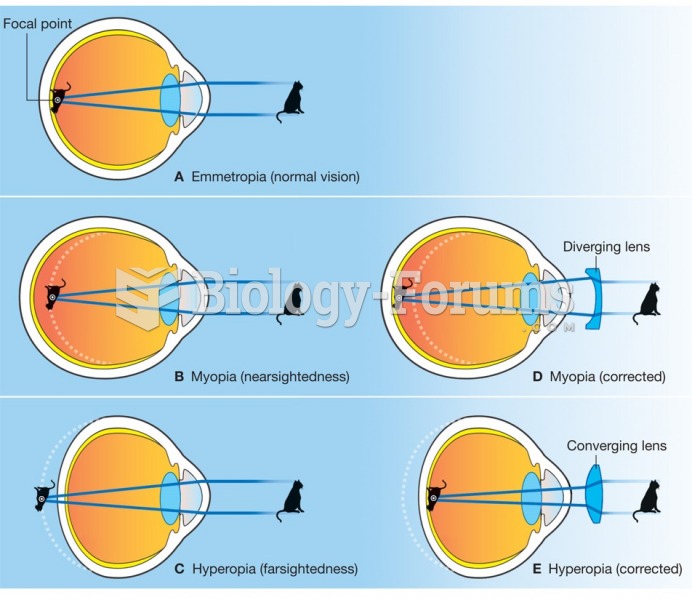|
|
|
The most common treatment options for addiction include psychotherapy, support groups, and individual counseling.
The longest a person has survived after a heart transplant is 24 years.
Between 1999 and 2012, American adults with high total cholesterol decreased from 18.3% to 12.9%
Acute bronchitis is an inflammation of the breathing tubes (bronchi), which causes increased mucus production and other changes. It is usually caused by bacteria or viruses, can be serious in people who have pulmonary or cardiac diseases, and can lead to pneumonia.
The largest baby ever born weighed more than 23 pounds but died just 11 hours after his birth in 1879. The largest surviving baby was born in October 2009 in Sumatra, Indonesia, and weighed an astounding 19.2 pounds at birth.







